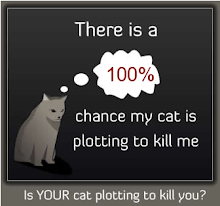Today, April 22, was Earth Day. It was also the two year and two day anniversary of the Deepwater Horizon spill, an event which will have changed my corner of the earth forever. The video above, a time-lapse sequence gathered by NASA, shows the evolution of the spill for the year following the explosion of the Deepwater Horizon rig, on April 20, 2010. Looking at the images at end, you might think, Oh, good, the oil is gone. Or... not as visible. Where did it go, I counter? Where. Did. It. Go?
It's still there.
As the NY Times' op-ed columnist Abrahm Lustgarten dubbed it the other day, the Deepwater Horizon spill is the stain that won't wash away. And that is in more ways than one. Because in addition to the obvious anniversary media coverage, there have been quieter articles, far more disturbing articles, for the past year. Actually, I would go back to that very unsettling piece in Mother Jones in the October/November 2010 issue, about the BP coverup and the hidden damage that was slowly to be revealed. Revealed by what was missing, what was dying and what was diseased. They had this chart, which I can't get out of my head:
How deep would the damage go they asked? How much would the Gulf of Mexico ecosystem and food web be altered? The article talked about potential damage to krill, phytoplankton, and various keystone species, such as killifish, and what that might do to the entire marine food web. Damage some of these small species and you will potentially wipe out larger fish.
Deformed Gulf Shrimps On the left is a Gulf shrimp with growths, while on the right are a group of shrimps without either eyes or eye sockets. Left: Keath Ladner. Right: Erika Blumenfeld/Al Jazeera
From the little guys, like the mutant eyeless shrimp, covered with bizarre lesions that have resulted as of tomorrow in closure of shrimping in the Mississippi Sound, Mobile (Alabama) Bay, Bon Secour, Wolf Bay and Little Lagoon (all also in Alabama) to the giants of the Gulf, how bad is the damage in the Gulf? It is clear there has been widespread ecological damage, whether the government or BP are willing to admit it or not.* The Sarasota Herald-Tribune ran a long article in November, 2011, detailing a truly stunning level of problems in a diverse number of species, from hundreds of dead dolphin washing up on shore (500+ as of November, 2011 and how many more simply sank, I wonder?) to tiny plankton and deepwater coral. Small fish are overtly diseased and large fish, like whale sharks, are nowhere to be found. Let's not get into the cetacean situation, diseased dolphin or the sea turtle situation. Ditto on the human children, living, or should we say just barely getting by, at the water's edge in South Plaquemines Parish, LA. It is too depressing, right?
(Would YOU eat this fish? I sure wouldn't...)
(Image credit: Donald Waters/AP)
I guess I should just focus on the being good, wise shepherds of our Earth, which is what Earth Day is supposed to make us think about. But that leads me right back to the Gulf of Mexico...
We can look at the complex interplay in the Gulf states of Texas, Louisiana, Mississippi, Alabama and Florida, between the oil industry and the seafood industry as posing the ultimate question. We hear again and again about how we need to be less dependent upon Middle Eastern oil and that our only option is our own limited oil (with a distressing number of years from actually availability, a in a distressingly small supply) or that we need to use our natural gas resources, in spite of its addition of CO2 upon burning it, and even if we know from ample evidence (watch that little Vimeo video on the upper right sidebar!) that fracking that gas may permanently spoil our water supply.
On this Earth Day I contemplate what we will do with all that energy when we have less or no food to eat and no freshwater to drink? If it's so crucial for business that we have to use all this gas and oil, who will be buying stuff when they are too hungry and too thirsty to work and go to the mall? What is the plan then Big Oil?
Not long ago, I was surprised that several of my email correspondents knew of, or had read, Rachel Carson's Silent Spring, which I've mentioned on the blog before as presaging the world out of balance, driven so chemically, by pesticides and industry and cover-ups. Carson was concerned about DDT and it's terrible effects on birds (oh, gee, it's also rather bad for people...). September 27 will mark the 50th anniversary of Carson's book.
Look how far we've come.
If you want to really think about our 42nd annual Earth Day, I encourage my readers to check out photographer Julie Dermansky's Flickr set Louisiana Wetlands with 249 exquisite photos of what delicate wetlands are supposed to look like. And then, take a look at her BP Oil Disaster series with 600 photos of everything that BP, and the oil industry as a whole, want you to forget. In these two photo sets Julie, whose photos have been featured many a time on this blog, has captured a beautiful world, sullied for a cause that I have a harder and harder time grasping these days.
There's more to come on this topic in the weeks ahead. For instance, what about bees being impacted by neonicotinoid pesticides like Merit, threatening our land-based food supply? (Readers of the blog know that in addition to our fruits and vegetables, much of our livestock feeds on bee pollinated fodder.) What will we do when all the insect pests are resistant to imidacloprid, except for bees, who were our friends?
Every day ought to be Earth Day. For a few posts more, it will be.
*Surprisingly, one of the loudest recent clarions has been that of Al Jazeera. The irony of a media outlet in the oil-rich Middle East featuring such evidently controversial material is rich...
© Bright Nepenthe, 2012





















No comments:
Post a Comment